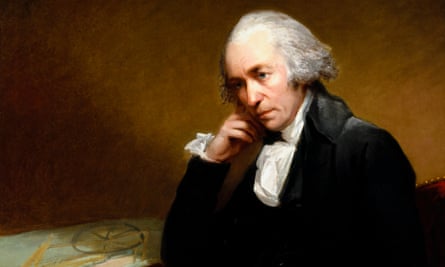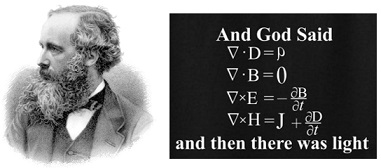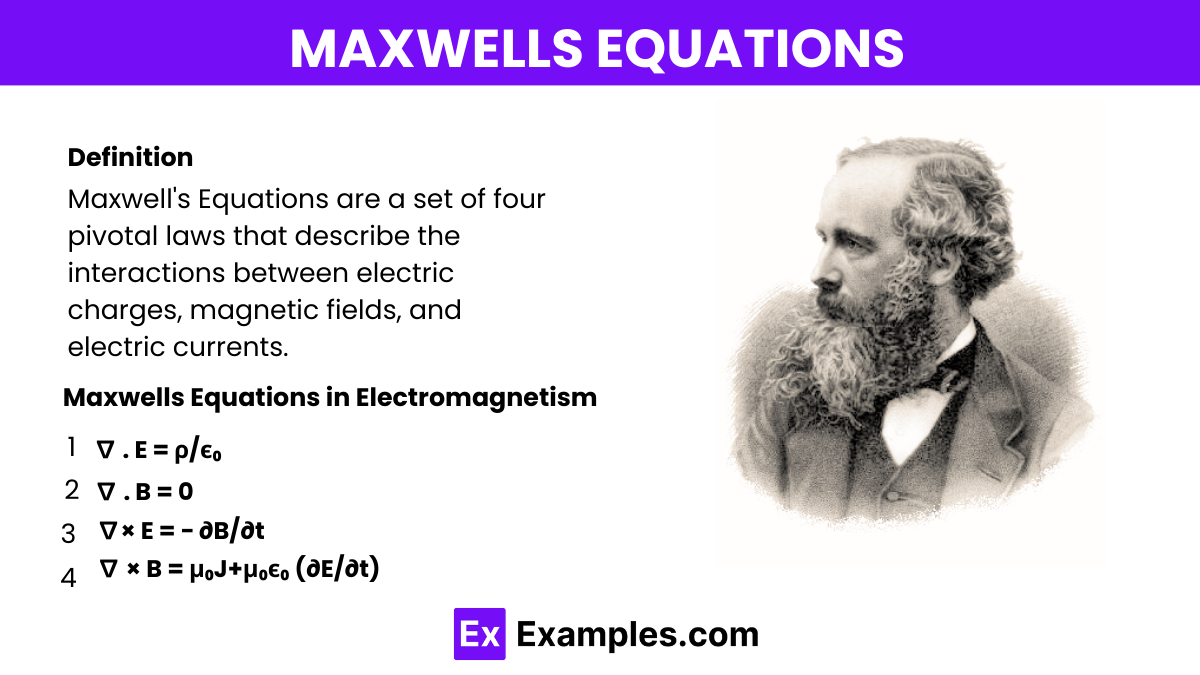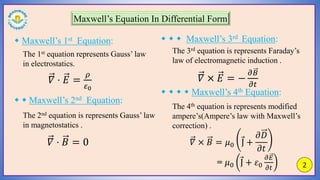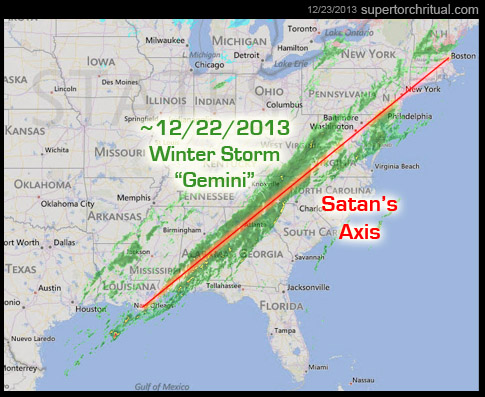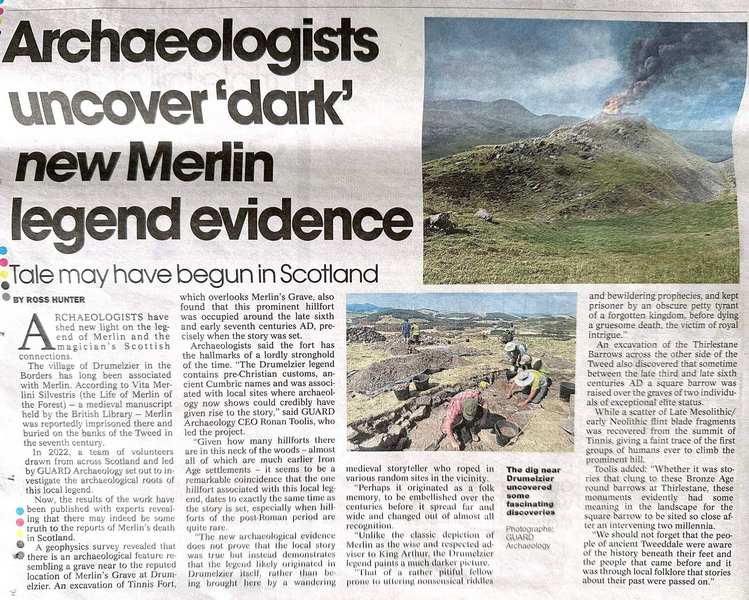|
|
CRISTO, MARIA, EL GRIAL Y LAS NACIONES: ESCOCIA (FUERTE CENTRO TEMPLARIO)
إختار ملف آخر للرسائل |
|
جواب |
رسائل 1 من 72 في الفقرة |
|
1398 Scot's Discovery of USA
|
 |
| THE WESTFORD KNIGHT/SINCLAIRS
 Ninety years before Christopher Columbus "discovered" America, a Scottish Knight and an Italian Navigator explored North America with a small fleet of 12 ships. The Knight was Prince Henry Sinclair and Nicolo Zeno was the Navigator. A carving on a rock in the centre of Westford, Mass. gives us important evidence of their remarkable exploration of the New World. Ninety years before Christopher Columbus "discovered" America, a Scottish Knight and an Italian Navigator explored North America with a small fleet of 12 ships. The Knight was Prince Henry Sinclair and Nicolo Zeno was the Navigator. A carving on a rock in the centre of Westford, Mass. gives us important evidence of their remarkable exploration of the New World.
Prince Henry's expedition at the time was thought to be insane.The general perception was that the Earth was flat and a fearful journey to the unchartered horizon meant a one way ticket to certain death. No one had ever returned from a journey across the Atlantic Ocean, intense speculation led to the conclusion that there must be a cliff-hanger fall off into the abyss.
Prince Henry's knowledge and ingenious intellectual skills, were greatly assisted by access to archaic maps and documents, found in Jerusalem and taken from the Holy Land to Roslin Castle by his direct relations who served their military missions under the banner of the red cross, esteemed as the Knights Templar.
The family's regard for these prized manuscripts was put into context, when, in 1447, as a ravaging fire overwhelmed the castle, the Prince's Grandson, William Sinclair, now in charge of the Sinclair's heritable property, did not oversee the safe evacuation of the woman and children, no....in his opinion there were more important issues to deal with, his ancestor's three vintage treasure chests were carefully secured and lowered to safety from the burning building.
 This encounter with destiny, was to leave an everlasting impression on William Sinclair. Sir William, the chapel builder, is also the direct ancestor of the First Grand Master Mason of Scotland, also named William St Clair (Sinclair) who had a exulting sense of pride when he inherited the title. An akashic oracular time machine centred on the Sun and the Moon would be built to house the ancient library of knowledge. A modern day Solomon's Temple (itself an anagram of Sol-Sun & Mon-Moon). The source of Modern Freemasonry was to leave some figurative allegories to symbolise deeper moral truths, or spiritual meanings. Bloodlines and the inseparable D.N.A. coil symbol that today is considered conventional to portray the blood-group message, was ascribed by Sir William to pay attention in chapter 13 verse 13 to the knowledge and secrets of the 13th disciple.... Matthew's words,...... This encounter with destiny, was to leave an everlasting impression on William Sinclair. Sir William, the chapel builder, is also the direct ancestor of the First Grand Master Mason of Scotland, also named William St Clair (Sinclair) who had a exulting sense of pride when he inherited the title. An akashic oracular time machine centred on the Sun and the Moon would be built to house the ancient library of knowledge. A modern day Solomon's Temple (itself an anagram of Sol-Sun & Mon-Moon). The source of Modern Freemasonry was to leave some figurative allegories to symbolise deeper moral truths, or spiritual meanings. Bloodlines and the inseparable D.N.A. coil symbol that today is considered conventional to portray the blood-group message, was ascribed by Sir William to pay attention in chapter 13 verse 13 to the knowledge and secrets of the 13th disciple.... Matthew's words,......
"Though seeing, they do not see;
though hearing, they do not hear or understand....."
Matthew's name in Hebrew means "Gift from God". In turn the adept Sir William named Rosslyn Chapel in commemoration and respect to Matthew and it was constituted and christened as the "Collegiate Church of St Matthew". Mathew's veneration, integrity and understanding is clearly brought out in the adrenalated sculptural form of the Master Mason's Pillar. The pillar is also referred to as the "Princes Pillar" in "An Account of the Chapel of Roslin (1778)." On the architrave adjoining the pillar, there is the inscription Forte est vinum fortior est rex fortiores sunt mulieres super omnia vincit veritas: "Wine is strong, a king is stronger, women are stronger still, but TRUTH conquers all" (1 Esdras, chapters 3 & 4)


Prompted by divine influence and inspired by ancient scriptures, William's covenant was to include all aspects of the same in his masterpiece, his roof design is an awe inspiring vaulted, treasure-chest roof-lid that has 215 stars and flowers skilfully sculptured into the ceiling. If we consider the half barrel roof as representational of 1/12 or 2160 years indicating the transition from one zodiacal symbol to the next in the precession of the equinoxes 2160 year period on our orbit round the 25920 years great zodiac precession. First detected by the Greek astronomer Hipparchus in about 130BC from the apparent increase in the observed celestial longitudes of stars. It amounts to about 50″.3 per year. Hence the equinoxes move westwards on the celestial sphere by 1 ° in about 72 years, when we calculate the full circle by multiplying 72 x 360 degrees it = 25920 which in turn takes 25 920 years to complete one circuit.


The great masonic seal, as seen on the dollar, with the all seeing eye on top of the truncated pyramid has 72 blocks which represents the degrees of perceived time, in the great precession of the equinoxes.
The Westford Carving provides one of the sparse bits of evidence of Prince Henry's exploration of America. Other testimony includes the Zeno Maps, the narrative written by Zeno, the Micmac legends, and the unique cannon found in Guysborough Harbour.
Further proof of a North American visit can be found in the stone carvings in Roslin Chapel. Representations of native American maize plants ornament the M curved arches, while other carvings include the healing aloe cactus.
Henry Sinclair was born and raised at Roslin Castle. His father was William Sinclair who died in Lithuania, on crusade with the Teutonic Knights. At the age of 24 Henry became the Earl of Orkney, an earldom which extended throughout the islands of Orkney and included Caithness. Coincidentally Orkney is the most northerly point of the Scottish Roseline. By the time he was 35 he had built a fleet larger than Norway's entire navy. As navigators he was fortunate to obtain the services of Antonio and Nicola Zeno whose father was Admiral Carlo 'The Lion' of Venice, famed for saving that Italian City. Setting out from Orkney with a fleet of 13 vessels and 100 men, they followed Zeno's map across the sea to Newfoundland and Nova Scotia. Theirs was a voyage of exploration and settlement. They weren't conquistadores as were many other explorers. Instead, they were welcomed by the Micmac Native Americans. During a winter season they lived peaceably among the Micmac Indians before Zeno returned to Orkney, while Sinclair explored further southward, along the Massachusetts coastline.

Pictured above is the Micmac River where the fleet sailed in and met the Native Americans.
Seeing smoke rising, a group of the explorers marched inland to Prospect Hill to get a better view. Along the way, Sir James Gunn, Sinclair's lifelong friend, died. In his memory, they carved his effigy in a rock ledge. It consisted of many punched holes, outlining the dead Knight. Archaeological experts have confirmed that the holes were punched 600 years ago! The effigy contains elements known only at that time to Northern Europeans. The sword and the shield trace solely to Prince Henry Sinclair and the Gunn Family.


HISTORY OF THE WESTFORD CARVING
1883
The "History of the Town of Westford" by Rev. R Hodgman, published in 1883, describes the presence of markings on the ledge. It is said the rude outlines of the human face have been traced upon it, and the figure is said to be the work of Indians."
1940
Willaim B Goodwin, an insurance executive who was obsessed with his interest in archaeology, and Malcolm Pearson, photographer, published a description of the carvings.
1950
Frank Glynn, president of the Connecticut Archaeology Society, thought the sword was of viking origin. T.C Lethbridge, curator of the University Museum of Archaeology and Ethnology in England, identified the sword as "a large, hand-and-a-half wheel pommel sword of the fourteenth century type." Further he suggested that the arms armour and heraldic emblems were a kin to the first Sinclair Earl of Orkney.
1974
Frederick J. Pohl, student of pre-columbian exploration and writer, made a thorough study of life and travels of the Earl of Orkney, including the carving. He published his findings in "Prince Henry Sinclair, his Expedition to the new World in 1398."
1970's
Allister MacDougall, the Town Historian of Westford, erected a granite monument beside the carving.
1990
Marianna Lines, under contract of Niven Sinclair, made a cloth rubbing of the Westford Knight Carving which revealed more detail than previously seen.
  
Pictured above is a tribute to The Westford Knight; which can be found in Westford,
THE EPIGRAPHIC TOMB STONE reads
PRINCE HENRY FIRST SINCLAIR OF ORKNEY BORN IN SCOTLAND MADE A VOYAGE OF DISCOVERY TO NORTH AMERICA IN 1398 AFTER WINTERING IN NOVA SCOTIA HE SAILED TO MASSACHUSETTS AND ON AN INLAND EXPEDITION IN 1399 TO PROSPECT HILL TO VIEW THE SURROUNDING COUNTRYSIDE ONE OF THE PARTY DIED. THE PUNCH-HOLE ARMORIAL EFFIGY WHICH ADORNS THIS LEDGE IS A MEMORIAL TO THIS KNIGHT.
Effigy knight below.
|
|
|
|
|
جواب |
رسائل 58 من 72 في الفقرة |
|
|
|
|
جواب |
رسائل 59 من 72 في الفقرة |
|
|
|
|
جواب |
رسائل 60 من 72 في الفقرة |
|
|
|
|
جواب |
رسائل 61 من 72 في الفقرة |
|
|
|
|
جواب |
رسائل 62 من 72 في الفقرة |
|
|
|
|
جواب |
رسائل 63 من 72 في الفقرة |
|
|
|
|
جواب |
رسائل 64 من 72 في الفقرة |
|
|
|
|
جواب |
رسائل 65 من 72 في الفقرة |
|
|
|
|
جواب |
رسائل 66 من 72 في الفقرة |
|
James Watt and the sabbath stroll that created the industrial revolution
This article is more than 9 years old
On a spring Sunday in May 250 years ago, the Scottish engineer had a stroke of mechanical inspiration – and changed the world
Fri 29 May 2015 15.48 BST
Two hundred and fifty years ago this month, a young Scottish engineer took a Sunday walk across Glasgow Green – and changed the world. Thanks to the idea dreamed up by James Watt that Sunday in May 1765, human beings became masters of power generation and so transformed our planet.
At the time, Watt was merely fixated with the problems posed by the primitive and inefficient steam engines that were then being used to pump water from mines, and had already made several futile attempts to improve them. Then, on his Sunday walk, the idea for a new device – which he later called the separate condenser – popped into his mind.
It was a notion that would have stunning consequences. The separate condenser changed the steam engine from a crude and inefficient machine into one that became the mainstay of the industrial revolution. Britain was transformed from an agricultural country into a nation of manufacturers.
Today, many scientists believe the processes unleashed by Watt have begun to alter the physical makeup of our planet. After two-and-a-half centuries of spewing out carbon dioxide from plants and factories built in the wake of his condenser’s invention, the atmosphere and crust of the Earth are beginning to be transformed. Watt truly changed the world, it seems.
Indeed, that walk on Glasgow Green remains “one of the best recorded, and most repeated, eureka moments since Archimedes leaped out of his bathtub”, according to William Rosen in his book The Most Powerful Idea in the World: A Story of Steam, Industry and Invention, published in 2010.
In 1765, Watt – then an instrument-maker based at Glasgow University – was working on a Newcomen pump, a state-of-the-art device in which steam pushed a piston through a cylinder. Water was then sprayed into the cylinder, cooling it and causing the steam to condense, creating a vacuum behind the piston that sucked it back into its original position. More steam was pumped in and the piston was pushed forward again.
It was a very powerful process but also a very inefficient one. Constantly heating and then cooling the engine’s huge cylinder required huge amounts of heat and coal. Steam engines like these had only limited usefulness.
Then Watt set off on his walk. When he was halfway across the green, the idea of a separate condenser came into his mind. Such a device would, he realised, create a vacuum that would help suck in the engine’s piston but still allow its main cylinder to operate at a constant temperature. “I had not walked further than the golf-house when the whole thing was arranged in my mind,” he later recalled.
The earliest known portrait of James Watt, painted by Carl Fredrik von Breda in 1792. Photograph: SSPL via Getty Images
Watt would have gone to work straight away but was constrained by the dictates of the Scottish sabbath. He quickly made a model of his device, nevertheless, and this is now displayed in the Science Museum in London. Four years later, he patented the condenser – and triggered the industrial revolution.
“Watt’s condenser tripled the efficiency of the steam engine and that meant that mill or mine owners got three times more mechanical work for every tonne of coal they had to buy,” says Colin McInnes, professor of engineering science at Glasgow University. “It meant that Britain’s coal stocks had been effectively trebled. He made a tremendous difference to the rate at which industry spread through Britain and subsequently the rest of the world.”
Until Watt, human enterprise was constrained by the process of photosynthesis, says McInnes. “In other words, we had to rely on natural living sources for the power we needed to run our factories or plants: fast-flowing water or horses or burning wood. By making the steam efficient, Watt changed all that. He gave us the means to exploit energy-dense fossil fuels in an effective manner. It changed the world and ended the era of renewable energy.”
This point is backed up by Ben Russell, curator of mechanical engineering at the Science Museum, and author of James Watt: Making the World Anew, published last year. “Before Watt, industry had to rely on water power, and there was a strict limit to the number of factories you could build on the banks of fast-flowing rivers,” he says.
“After Watt invented the separate condenser, you could build highly efficient factories almost anywhere you wanted. It made it possible to build plants that were driven by cheap, relatively easy sources: coal and steam. The cotton industry was transformed. So was brewing. And mining. Watt brought wide acceptance of steam as a power source.”
Within a few decades of Watt’s breakthrough, networks of factories and mines, linked by railways, were spreading across the country, triggering a national frenzy for fossil fuels that has since become a global obsession. Steam power no longer dominates global industry but our reliance on fossil fuels such as coal, oil and gas still lingers – with growing impacts on the planet.
Indeed, the Nobel-prizewinning chemist Paul Crutzen now argues that the greenhouse gases produced by burning fossil fuels have brought about such profound changes that we must accept the world has entered a new epoch. He calls it the “anthropocene”.
","alt":"How the condenser works","index":16,"isTracking":false,"isMainMedia":false}" data-island-status="hydrated" style="box-sizing: border-box;">
According to Crutzen and many other scientists, the planet is no longer being shaped primarily by natural processes but by ones set loose by human beings. We are raising levels of carbon dioxide in the atmosphere, scarring the planet’s surface in our search for coal and metals, cutting down forests to make way for factories and homes, and acidifying the oceans. Humans have become planet changers.
As to the event that triggered this onslaught, there are few better candidates than Watt’s stroll across Glasgow Green 250 years ago – though for such a momentous event, it is still afforded remarkably little recognition.
Indeed, it was only relatively recently, in the 1980s, that Glasgow’s councillors decided to install a small boulder in what is Glasgow’s oldest park, with a simple inscription: “Near this spot in 1765, James Watt conceived the idea for the separate condenser for the steam engine.”
By contrast, a few metres away, a 40-metre obelisk dedicated to Horatio Nelson was erected in 1806, only a year after his death at Trafalgar. Thus a remote battle was celebrated with a grandiose monument while an invention that gave birth to the industrial revolution and changed the world had to wait almost two centuries for recognition – in the form of a small stone.
On the other hand, Watt’s striking achievement will be recognised on 5 June, when Glasgow University stages a seminar, The Invention that Changed the World, focusing on Watt and his revolutionary separate condenser, as part of the Glasgow Science Festival.
“Watt was a real product of the enlightenment,” says the seminar’s organiser Lesley Richmond, deputy director of Glasgow University’s archives. “He was self taught, yet went on to work at Glasgow University at a time when Adam Smith and Joseph Black were teaching there.
“He was far more than just the inventor of the separate condenser, though that was the device that was to have the greatest impact. He also invented a machine for copying documents, for example – an early photocopier, in effect.
“And there is so much we can still learn about him. Many of his devices and papers have still to be properly archived and studied. In 2019, we will mark the bicentenary of Watt’s death. By then, we want to have all his work in digital form. Then we will get a real chance to appreciate his fantastic achievements.”
https://www.theguardian.com/technology/2015/may/29/james-watt-sabbath-day-fossil-fuel-revolution-condenser |
|
|
|
جواب |
رسائل 67 من 72 في الفقرة |
|
|
|
|
جواب |
رسائل 68 من 72 في الفقرة |
|
|
|
|
جواب |
رسائل 69 من 72 في الفقرة |
|
|
|
|
جواب |
رسائل 70 من 72 في الفقرة |
|
From The Labyrinth of the Grail by William F. Mann (pp.74-75):
If the inner secrets of Masonry do not lie in Hell where do they lie? Of course, they lie in Heaven. But Heaven needs Hell. Thus, through Craft Masonry the initiate learns that the original columns of the temple were hollow and each supported a globe, one representing a map of the world and the other a map of the heavens. In many ways the "mappamundi" produced in the fourteenth to sixteenth centuries reflects this notion where one ring or circle illustrates what was known of the eastern world at that time and the western circle represents the New World - L'Arcadia. Could mappamundi refer to a world created by the Cathar god of evil - Rex Mundi, "King of the World?"
If true, then it goes a long way to explain why the lands of the New World purportedly fell along what was considered in the sixteenth century to be SATAN'S AXIS, that line beyond what was known of the world at the time. Satan's Axis not only runs lengthwise through Nova Scotia but also extends through Boston, New York, Philadelphia, and along the Allegheny Mountains - all renowned areas of early occult and witchcraft practice.
Beyond coincidence is the fact that the largest manganese and coal deposits within Nova Scotia lie along this so-called Satan's Axis. And there is the evidence presented by Barry Fell in America B.C. that the majority of pre-Columbian relics and remnants found in North America also relate to this axis.
https://www.goroadachi.com/etemenanki/solstice_hellgate.html |
|
|
|
جواب |
رسائل 71 من 72 في الفقرة |
|
HOLY GRAIL IN NOVA SCOTIA: AN INVESTIGATION INTO WHAT YOU’VE NEVER LEARNED IN HISTORY CLASS
By: Andrew Rafuse
Among historians there is a form of professional ignorance that immediately works to discount any new theories, new information which could change our views of modern civilization. This essay will explore one of these issues.
Who was the first European in Nova Scotia? Where was the first settlement? Why were they here? This essay will seek to answer these questions and provide supporting evidence to back up the claims made in this paper.
The Holy Grail is arguably one of the most prized religious items in the world. There has been debate among scholars for centuries as to what exactly the Holy Grail is. The generally accepted theory is that the Grail is the chalice that Christ drank from at the last supper, and the chalice used to collect his blood during the crucifixion. Another theory that has been gaining popularity recently is that the Grail is actually the bloodline of Jesus Christ, his descendants. A Biblical scholar who felt that Mary Magdalene was Christ’s wife first proposed this theory. (Bradley, P. 17)
If we look at the most powerful families in the world we soon see a trend. They are, albeit distantly, related. The Rockafeller family can trace their lineage back to the Steward family. The Stewards can trace their family bloodlines back further to early Romano-Celtic rulers, who could trace their lineage to the “Holy Grail” and through this woman to Joseph of Arimathaea. If we are to believe that the Secret of the Holy Grail is that it was in fact a woman, the next direct descendant of Christ than these families can trace themselves directly back to him through the Grail.
After Christ was crucified the care of the Grail was given to Joseph of Arimathaea; he travelled west to the British Isles, arriving and settling in the area of Glastonbury. Evidence shows that he stayed there for several years. To further Substantiate this claim, in Glastonbury there is a tree, known as the “Glastonbury Thorn” the only known area where this tree grows is in the Middle East, near where Christ was crucified. The Legend of this tree is that when Joseph of Arimathaea arrived in Glastonbury, he stuck his walking staff in the ground. This rooted and became known as the Glastonbury Thorn, which was chopped down in the 1600s by a Puritan fanatic. (Bradley, P. 26)
In looking at the legend of the Holy Grail we cannot ignore role of Arthur in this legend. Evidence will prove that King Arthur did exist, and that there were in fact Knights of the Round Table. When looking at this one must be weary, and sift through the tales of magic and dragons to find the actual truth; this is a somewhat difficult task due to the nature of many of these tales.
What is known about Arthur is that he lived between 470 and 550 CE. A wound received at the Battle of Camlann in 542 left him crippled. After the battle he was taken to Glastonbury (then known as the Island of Avalon) to heal. Exactly how long Arthur lived after Camlann is unknown but some Welsh stories have him living on for a few more years as the crippled Fisher King of or near the Grail Castle.
The title of King was something which Arthur never received; he was however a military commander who was responsible for protecting the border between England and Scotland as well as portions of the English coastline from invasion. It is a myth that Arthur and the Knights of the Round Table were the Guardians of the Holy Grail. It is known that during times of peace in Britain Arthur’s Knights would get bored and restless. As a way to alleviate this boredom Arthur sent his knights on quests to find the Holy Grail. These quests became little more than an excuse for the knights to plunder, rape and pillage. (Boyles, Livingston)
Geoffrey of Monmouth wrote the first known legend written about “King” Arthur. He said the there were only a small number of Knights under Arthur’s command. This may be due in part to a mistranslation of the word “rotunda”. This is a roman word that means roughly, a large round building. Geoffrey may have miss-interpreted this when he was writing his story and thought that it meant a round table. Historical evidence will show that at times there were over 6000 Knights of the “Round Table”. (Bradley, P. 33)
These are the known facts about Arthur, as you can see his actual relevance to the Holy Grail is negligible. He was included in this essay to show his legendary connection to the Grail and to illustrate that his actual contribution was small.
The groups of people known as the Knights Templar may have had the most impact on the legend of the Holy Grail. This order began at the end of the first crusade with the mandate to protect pilgrims on their way from Europe to the holy land. The first Templar knights were poor, relying on alms from travellers to survive. The Order very quickly gained power in Europe as well as in the Holy Land. They changed their mandate slightly to include the protection and in some cases finding of holy relics such as the Shroud of Turin, Arc of the Covenant, and the Holy Grail.
Over the two hundred year life span of the Knights Templar they gained power in Europe on a massive scale, being exempt from all powers save that of the Pope himself. (Who Were the Knights Templar?)
Due to the immense power and wealth held by the Knights Templar they were feared and hated by almost all of the kingdoms of Europe; this would ultimately lead to their downfall. The king of France, Philip IV began making accusations against the Templars. They were subsequently arrested and tortured. Many of the knights confessed, through the use of torture, to things such as trampling and spitting on the cross, homosexuality and acts of sodomy and worshipping of the Baphomet, an alleged false idle (further research would later prove that this was in fact the Shroud of Turin.) (Griffin)
In 1307 the Pope Clement V, issued the Vox In Exelsco. This document officially disbanded the order or the Knights Templar and ordered them all to be arrested and tried for heresy. Shortly after there was another bull issued by the Pope, the Ad Providum, which passed all property and assets controlled by the Knights Templar to their rivals, The Knights of the Hospital (Pope of The Templar Era)
A portion of the Templar fleet set sail for Portugal, where, they simply took on new names. The rest set sail north to Scotland. Where the Scottish independence movement gave them an ideal cover.
At the time the most powerful family in Scotland was the Sinclairs, who’s land provided a perfect hiding place for the fleet of the Knights Templar. The knights established a fortress in Rosslin, Scotland to house their remaining treasures; including the Holy Grail. The Knights Templar would soon be able to repay the kindness of the Scottish people by fighting alongside them at the of Bannockburn and other battles for Scottish independence. (Prince Henry Sinclair)
The Templars lived in Scotland for many years without fear that their secret would be discovered or threatened. This time of comfort came to an end as the English began pushing north back into Scotland. This push made the Templars uneasy and they began to look for a way to move their precious relics out of Scotland. This escape came in the 1390s in the form of a man named Henry Sinclair. Sinclair had employed Antonio and Nicolo Zeno, expert mapmakers and navigators to help him sail west on a voyage of exploration. (Cummings)
Sinclair arrived in what is now Nova Scotia in 1398, he then sailed around the southern tip of the province and to New England. While in Nova Scotia it is thought that Sinclair established at least one settlement. Was this settlement where the new haven for the Knights Templar?
The site of the settlement is in central Nova Scotia, just south of the area known as “The Cross” or the crossroads in New Ross. The ruins were built in a style of architecture known as rubblework, which involved piling pieces of oddly shaped stone together so they lock together in a way and form a wall; after this was done than mortar may have been added. This type of architecture was consistent with fourteenth century Celtic architecture.
One of the mysteries of the site that has baffled scientists and historians for years is the “Holy” well within the walls of the ruined castle. This well has never run dry, even though it is on a hill and even when other wells in the area are completely dry. The New Ross fire department has this well on record as an inexhaustible water supply. Another curiosity about this well is the condition of the water. Deposits of heavy metals in the ground of New Ross causes the water to be very hard and have extremely high counts of heavy metals (ie lead, uranium). The water from this well is completely free of such metals; in fact it has the lowest count of metallic particles in the area.
Small-scale digs on the site reveal several artefacts from fourteenth century Scotland; including a piece of a sword blade, a dagger blade and several farming implements. It should be noted that this has only been placed from this time period by the assessments of historians; there has never actually been any scientific tests on the items to prove their origins.
If we look at the site on a larger scale we begin to see the significance of the area where the castle is located. It is in central Nova Scotia, near two rivers, the Gaspereau and the Gold. These rivers both flow from the same source but once they pass through New Ross they divide, the Gaspereau flows north and empties into the Bay of Fundy, while the Gold river flows south and empties into Mahone Bay. This made finding the site simple, if you knew what you were looking for.
Medieval navigation was less than advanced. It was nearly impossible for navigators to find their position on an east-west plane, however they could determine where they were based on north-south. Because of this the preferred and most efficient form of navigation was to sail directly north or south until you were at the same latitude as the end location and then sail east or west from there. This would often place the navigator within about 200 miles of their desired destination. In the case of Nova Scotia, a completely unpopulated (at least by Europeans) land, there were no towns or ports that could be used as reference for location.
Both Rivers emptied into bays that were on the same latitude, this made it confusing and almost impossible for navigators to distinguish between eh two. The Gold River empties into Mahone bay, near Oak Island; while the Gaspereau River empties into the Bay of Fundy, near and island- Oak Island.
If we look more closely at these islands we start to see some startling similarities; the Gaspereau Oak Island was part of a land reclamation project during the 1930s and is now a peninsula. However, the comparisons are still relevant.
Both islands are at the mouths of the rivers leading to the castle in New Ross. When you are sailing toward the islands the river is to the right of the island. Oak trees, something that doesn’t happen on any other island, populate both of the islands. The reason why they are not found anywhere else is simply, acorns don’t float. Were these islands markers that a navigator would use to find the castle?
Upon further exploration of the Oak Island in Mahone Bay one will find several more clues that point to a major settlement in Nova Scotia. Tourist maps of the island will show so-called “Pirate walls” along the coast of the island. These walls were, as the name implies, assumed to have been made by pirates; even though permanent construction and that type of hard work were not typical pirate traits. The style that the walls are built in does however date back to fourteenth century Celtic Europe, the same as the castle in New Ross. (Bradley Pp. 45-80)
The famous “money pit” as well fits into this theory. The construction of the money pit seemed to take place over about 500 years. Radio Carbon dating of boards found in the deepest part of the pit (approximately 200 feet) shows that the first part of the pit was constructed at the same time as the walls on the island and the castle. It was later built upon in the fifteenth and sixteenth century. This later construction may be when Pirates used it. No one has been able to successfully excavate the “Money Pit” as of yet so the question remains, what is in the pit? Was it a hiding place for treasures brought here by the Knights Templar? Was it a storage facility for gold mined in New Ross?
This essay has presented you with evidence, not concrete proof that there was an early settlement in New Ross, Nova Scotia. As well that there is a connection between the Knights Templar, an order charges with protecting sacred Christian relics and this settlement in New Ross. The problem inherent with this subject is that there has been very little official, professional research into the topic. When researching one must be careful to sift through the legends and faerie tales that all to easily become wrapped up in a topic such as this.
https://www.angelfire.com/ns2/hjch2001/Rafuse_essay.html |
|
|
|
جواب |
رسائل 72 من 72 في الفقرة |
|
|
|
 أول أول
 سابق
58 a 72 de 72
لاحق سابق
58 a 72 de 72
لاحق
 آخر
آخر

|
|
| |
|
|
©2025 - Gabitos - كل الحقوق محفوظة | |
|
|

 This encounter with destiny, was to leave an everlasting impression on William Sinclair. Sir William, the chapel builder, is also the direct ancestor of the First Grand Master Mason of Scotland, also named William St Clair (Sinclair) who had a exulting sense of pride when he inherited the title. An akashic oracular time machine centred on the Sun and the Moon would be built to house the ancient library of knowledge. A modern day Solomon's Temple (itself an anagram of Sol-Sun & Mon-Moon). The source of Modern Freemasonry was to leave some figurative allegories to symbolise deeper moral truths, or spiritual meanings. Bloodlines and the inseparable D.N.A. coil symbol that today is considered conventional to portray the blood-group message, was ascribed by Sir William to pay attention in chapter 13 verse 13 to the knowledge and secrets of the 13th disciple.... Matthew's words,......
This encounter with destiny, was to leave an everlasting impression on William Sinclair. Sir William, the chapel builder, is also the direct ancestor of the First Grand Master Mason of Scotland, also named William St Clair (Sinclair) who had a exulting sense of pride when he inherited the title. An akashic oracular time machine centred on the Sun and the Moon would be built to house the ancient library of knowledge. A modern day Solomon's Temple (itself an anagram of Sol-Sun & Mon-Moon). The source of Modern Freemasonry was to leave some figurative allegories to symbolise deeper moral truths, or spiritual meanings. Bloodlines and the inseparable D.N.A. coil symbol that today is considered conventional to portray the blood-group message, was ascribed by Sir William to pay attention in chapter 13 verse 13 to the knowledge and secrets of the 13th disciple.... Matthew's words,......










